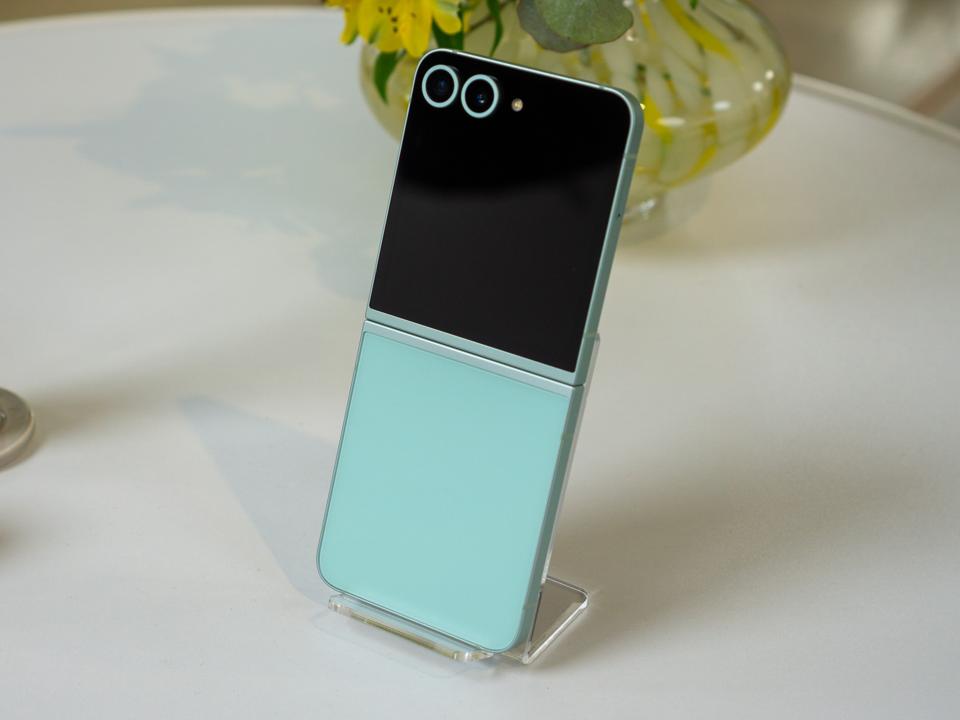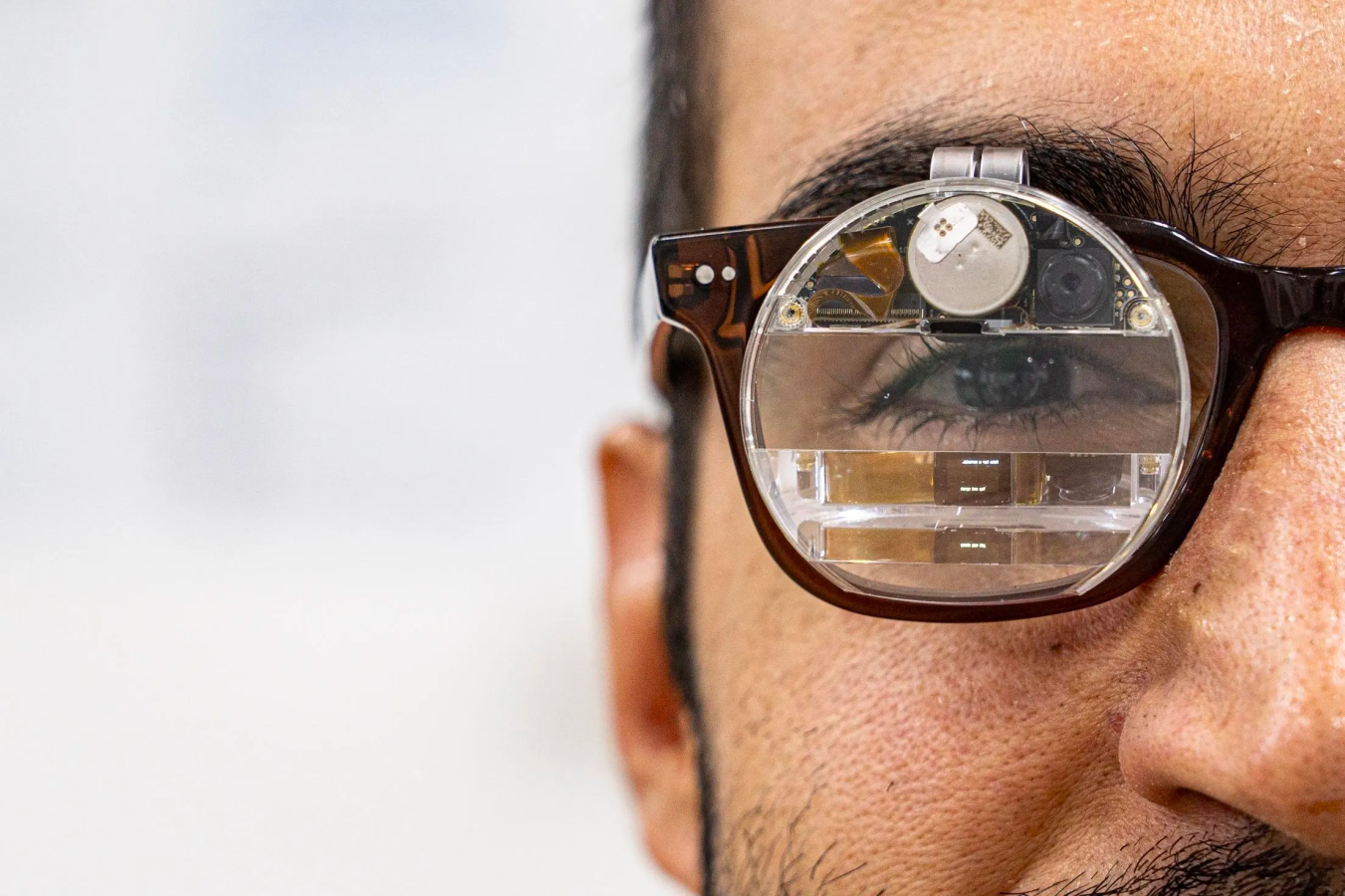While I’ve tested smart glasses in the past, the stylish Ray-Ban Meta smart glasses, which launched last September, recently caught my eye (if you’ll pardon the pun). Not only do these prescription-friendly sunglasses keep the sun out of my eyes, I can also listen to music on them, take calls and snap photos, all without fishing out my phone from my bag. As a tech editor who lives to test wearables, I wanted to put this borderline-extra but interesting accessory to the test to see if they were worth the $300 price. On paper, having a pair of sunglasses with a built-in camera and Meta AI voice commands could feel a little much. But maybe the Ray-Ban Meta smart glasses would be the right kind of extra.

I tested a pair of prescription Ray-Ban Meta smart sunglasses for about a month around New York City, commuting to briefings, walking around parks and otherwise going about my day. Some of the features left me wowed, and I had a lot of fun snapping pictures with them. I saw a lot of utility in reading my text messages on the go and the audio was decent. But one massive flaw makes me hesitant to pick up another pair. Keep reading to hear my thoughts on the design and performance of these smart sunglasses.
Ray-Ban Meta Smart Glasses: Design
Sleek Yet Bulky
The Ray-Ban Metas offer a slick, subtle design. At first glance, a few of my family members couldn’t even tell that they came with a built-in camera. But it’s there; the lens is tucked into the side of the upper right frame. The other side features a dummy lens to keep a uniform look. And rest assured, when you snap a photo, the ring around the lens lights up so those nearby know you’re taking a picture. The same goes for video, in which the ring slowly flashes.

The charging case is a smooth, faux leather finish that looks great but is bulky. It takes some finagling to get the case in my bags, and initially, I had some trouble removing the sunglasses from the magnetic charging mount inside the case. Its exterior features an LED light on the flap that can tell you at a glance how much battery life you have left.
My only issue with the design is that the frame arms are thick. I wore them around New York City when my family came to visit, often for a few hours at a time, and I learned the hard way that you feel that bulk. I wore the Skylar model and suspect that depending on which frame you choose, your mileage may vary. But for that minor issue, I didn’t experience any slipping from my face, a boon compared with the other pair of smart sunglasses I tested this summer.
Ray-Ban Meta Smart Glasses: Battery Life
Just Mediocre
The battery life underwhelmed me. The sunglasses last four hours, which was on par with what Meta and Ray-Bans promised—but what if I ended up wearing these to the beach and wanted to listen to my tunes in peace for more than that allotted time? Four hours might be enough time for the average user, but for those planning for lengthier excursions and wear, it’s worth knowing this ahead of time. For those who spend all day outside at festivals or lounging in Central Park, the battery life could be a problem.
If you’re considering the Transitions or clear lens model for prescription eyeglasses use indoors—I suspect you definitely would prefer a longer charge to complete say an eight-hour workday. For comparison, the Amazon Echo Frames (Gen 3) smart glasses offer six to eight hours on a single charge, but they don’t come with a camera. Depending on what smart glasses you choose, there will be some perks and trade-offs. Unfortunately, for the Meta Ray-Bans, I feel that the camera and audio came at the cost of battery life.
Don’t forget that you get more charging with the included case, which boosts the battery life to up to 32 hours, so if you need a quick charge, you can pop them back in the case. It also features a handy LED strip that indicates how much battery life is left.
Ray-Ban Meta Smart Glasses: Performance
In Practice, A Good Pair Of Smart Sunglasses
I was fully in the boat where I didn’t think I needed or wanted smart sunglasses before I landed this pair. I already had my beloved Denon PerL Pro wireless earbuds, and my Samsung Galaxy S24 Ultra offers Google Assistant and Bixby for my voice assistant needs. However, once I got the sunglasses set up, I found myself enjoying them much more than I thought I would.

Crystal-Clear Audio
The audio is what really wowed me on these sunglasses. The pair uses an open-ear design, so you can hear exactly what’s going on around you, but the technology isn’t new. The Amazon Echo Frames (3rd Gen) already allow for music streaming, and last year Bose introduced the Bose Ultra Open Earbuds that clip to your ear helix. Having tested both of those devices, I was able to compare them to the Ray-Ban Metas. I appreciated both, but the Echo Frames lack a depth to the audio that make me pine for my earbuds. Comparatively, the Ray-Ban Metas pack strong audio that is surprising in a pair of glasses. After all, sunglasses protect your eyes; they’re usually not for listening to music.
Its audio comes across crystal clear. These were loud enough that I could hear them as I walked bustling New York City streets, and the depth of the mids and basses had a robustness to them that I felt rivaled some of the best wireless earbuds. They weren’t on par with my precious Denon PerL Pros—that’s a hard pair to beat in terms of audio quality—but they were close enough that I didn’t mind tossing the sunglasses on and heading out the door without my earbuds.
The touch controls felt really easy to use, too, and voice activation for Meta AI, which gets activated by saying, “Hey Meta,” seemed responsive and accurate. I didn’t find the time to go really deep in testing this feature, but I got accurate weather readings and sufficient answers to simple questions. I also enjoyed that it read my text messages to me while I was on the go. I do suspect that Meta and Ray-Ban focused on optimizing the AI voice assistant, rich audio and camera, which again, I feel came at the cost of battery life.

This panoramic view was taken on the Ray-Ban Metas. It captured details pretty well, but also gave a minor fishbowl effect.
Rebecca Isaacs for Forbes
After putting the camera and video to the test, they’re good enough for most needs. To me, the 12MP lens is designed more for fun rather than taking Insta-worthy shots, anyway. There was a slight fishbowl effect on some of the pictures I took, but I felt that was on par with the wide lens on a Samsung Galaxy S23 Ultra. It’s also easy to snap a photo: Just look where you want to snap and press a button on the arm. The resulting photo uploads to the Meta cloud storage.
One Major Flaw
The sunglasses come with an arguably fatal flaw—one that I personally experienced. You see, as much as I loved these sunglasses, they do not come with any on-device location tracking. If you drop them in your Uber and accidentally walk away, only to discover five hours later they’re missing (like I did), you have no recourse to track them. And in almost every scenario, wherever you’ve left them, unless a good Samaritan finds them, you’ve just lost your $300 Ray-Bans. In my case, the Ray-Ban Metas only a few weeks in my possession (about a month).

This feels like an egregious design oversight given that most wireless earbuds offer location tracking. Its direct competitor, the Amazon Echo Frames (Gen 3), come with a “find my device” feature if you leave them in your home or nearby. You can simply ask your Amazon Echo or open the Amazon Alexa app to help you locate them. From there, the smart home software rings them if they’re nearby. The Ray-Bans leave you solely responsible for a $300 pair of sunglasses, and if you set them down in a restaurant and walk away, you’re on your own. To make matters worse, it’s easy to pair the frames with a new phone. You can’t disable them from afar, which only increases the risk of theft.
If you surf subreddits, you’ll find hacks to attach an Apple AirTag or another tracking device to the back of the case, but then you’re adding more heft to an already bulky case.
Ray-Ban Meta Smart Glasses: Verdict
Great, If You Can Get Past The Lack Of Device Tracking
The Ray-Ban Meta smart glasses have a ton going for them. The Meta AI integrations felt useful in a pinch, the cameras were great for capturing vlogging content or images on the fly and of course, the audio was unparalleled to any other smart sunglasses I’ve tested to date. For those who want a buzzy new product to play with, it’s a fun investment or a great techy toy. You can take videos of motorcycle rides, snap shots while you’re in the middle of an adventure without risking your camera and so much more.
They’re on par with the pricing of their main competitor, the Amazon Echo Frames, which ring in at $330 when not on sale—and do not offer a camera. Of course, make sure that you double check they’re tucked in your pocket or bag before you start moving locations. If you lose them, you’re out $300, and if you’re like me, it’ll be difficult to justify replacing them— unless you want these fun features, a pair of regular sunglasses and earbuds do just the trick.
How I Tested The Ray-Ban Meta Smart Glasses
I wore a pair of Ray-Ban Meta smart sunglasses for several weeks outdoors most times I left the house, whether it was to the grocery store, the Met Museum and more. I took them on walks around my local park and tested the camera in the middle of New York City, taking photos of local stands and other urban landscapes.
I listened to audio for hours at a time, testing across different artists, including but not limited to: Chappell Roan, PVRIS, Twenty One Pilots, K. Flay and more. I compared them with the Amazon Echo Frames (3rd Gen), which I also tested, and wore the battery lives down to make sure the Ray-Ban Metas’ battery life was accurate.
As previously mentioned, I also inadvertently lost them and thus accidentally checked to see whether or not they had location tracking—they do not.
My Expertise
As a Midwestern transplant currently living in New York City, I’ve been deep in the weeds of the tech scene for over five years. I began at Lifewire, and my bylines include ZDNET, Decider, PCMag and many more. Currently, I’m the consumer tech and electronics editor at Forbes Vetted, where I spearhead all tech reviews coverage to bring you what’s new and provide recommendations on what products are worth your dollar.
My experience focuses on various consumer tech, from newly launched Samsung wearables to the mobile space. I’ve tested products like the Google Pixel 8 and the Bose QuietComfort Ultra earbuds. Additionally, I’ve worked in the smart home and home entertainment space, and tested the best gaming TVs, reviewing my top picks, the LG OLED Evo G4 TV and the Samsung Neo QLED 8K QN900D TV.
This article was first published on forbes.com and all figures are in USD.
Are you – or is someone you know -creating the next Afterpay or Canva? Nominations are open for Forbes Australia’s first 30 under 30 list. Entries close midnight, July 31, 2024.
Look back on the week that was with hand-picked articles from Australia and around the world. Sign up to the Forbes Australia newsletter here or become a member here.


